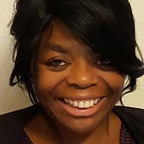Celebrating Black History Month with Susan McKinsey Stuart
Her birth
Susan McKinney Steward was born Susan Maria Smith in 1847 in Brooklyn, New York, in a family of wealthy pig farmers.
Her parents were very active in the defence of black people’s rights in Brooklyn.
From choirmaster to medical student
McKinney-Steward was a noted organ player, choirmaster, and musician,
The death of her brother in the Civil War, and the New-York cholera epidemic in 1866, were key in her wish to change her career.
She used money earned from teaching music to fund her medical school education, and in 1867, she attended the New York Medical College for Women and graduated as valedictorian in 1869.
A bit of context
To put things into perspective:
Slavery was abolished (in the US) in 1865 with the 13th Amendment.[1]
Two years after the 13th Amendment she attended the New York Medical College for Women where she studied homeopathy.
Her study
It is unclear why she studied homeopathy instead of medical science.
One hypothesis states that homeopathy, which was seen as quackery, was more accessible to women.[2]
She excelled in her studies and graduated in 1869, that is four years after the abolition of slavery.
Her career
Due to her blackness, she found it difficult to find patients, however, her work with malnourished children earned her increasing respect to the point where she had white patients as well as black ones.
From 1870 to 1895, she ran her own practice and in 1881 she co-founded the Brooklyn Women’s Homeopathic Hospital and Dispensary, which was later renamed the Memorial Hospital for Women and Children.
In 1896, she was elected into the New York Homeopathic Medical Society.
She got particular recognition for her work with children, e.g. in the treatment of marasmus (a severe form of malnutrition) [03].
In addition to her work with children, she also practised medicine at the Brooklyn Home for Aged Colored People.
From 1886, she travelled to states like Nebraska and Texas to treat the sick and injured, with her second husband, and round off her medical education by earning more medical licences, in Montana and Wyoming.
In 1906, she found a position at the African Methodist Episcopal Church’s Wilberforce University in Ohio, where she worked as college physician until her death in 1918.
Fighting go black people’s right, a never ending story
In addition to her medical work, she was also active as a campaigner for the right of women and coloured people.
For some time she was the president of her local chapter of the Women’s Christian Temperance Union.
Her name is now remembered in the Dr. Susan McKinney Secondary School of the Arts, Brooklyn, and the Susan Smith McKinney Steward Medical Society.
01) https://en.wikipedia.org/wiki/Thirteenth_Amendment_to_the_United_States_Constitution/ , last accessed 2022.02.15
02) https://en.wikipedia.org/wiki/Susan_McKinney_Steward/ , last accessed 2022.02.15
03) https://en.wikipedia.org/wiki/Marasmus/ , last accessed 2022.02.15
